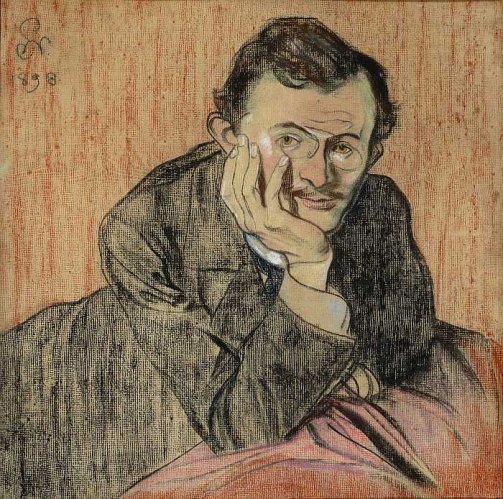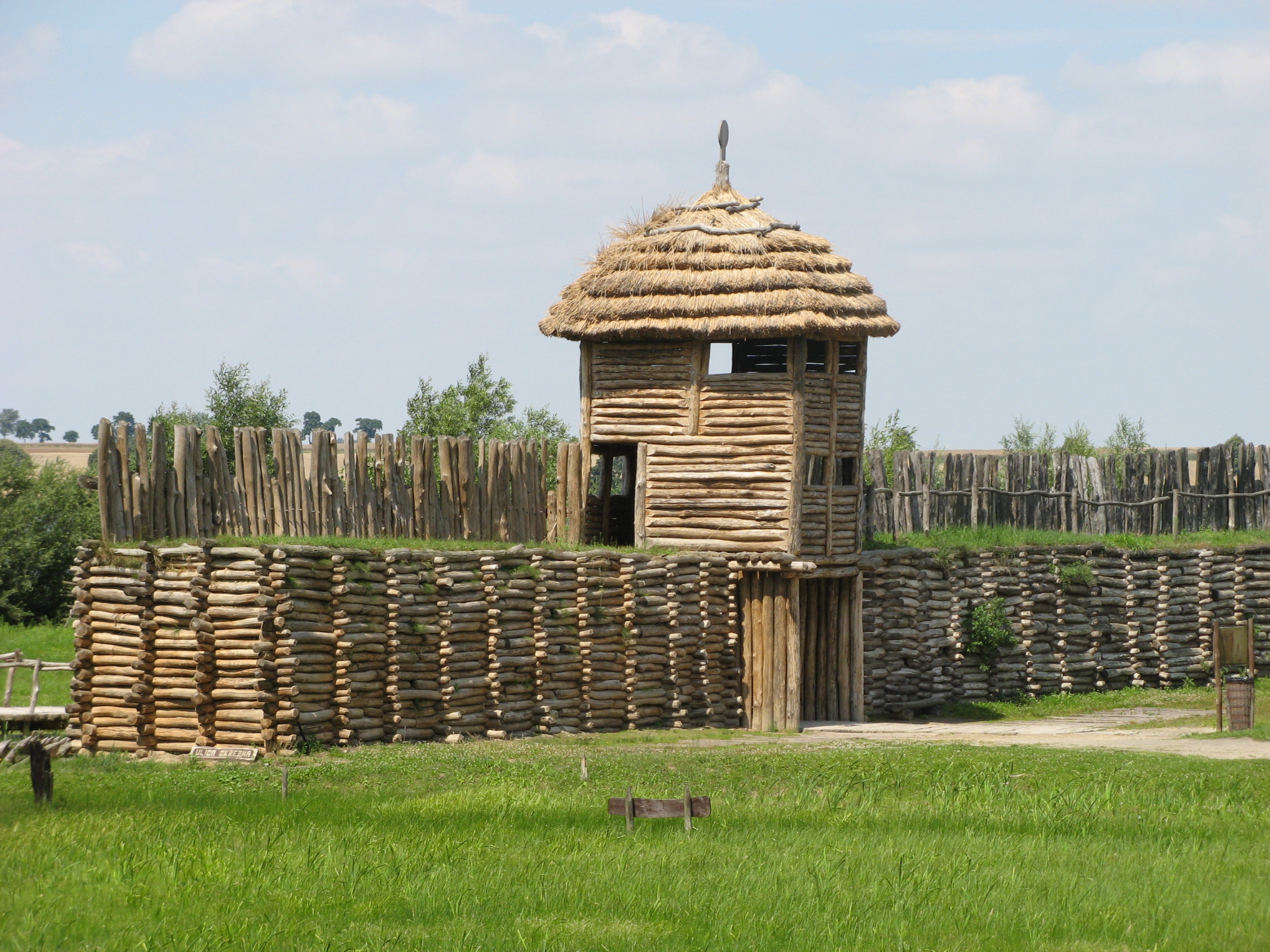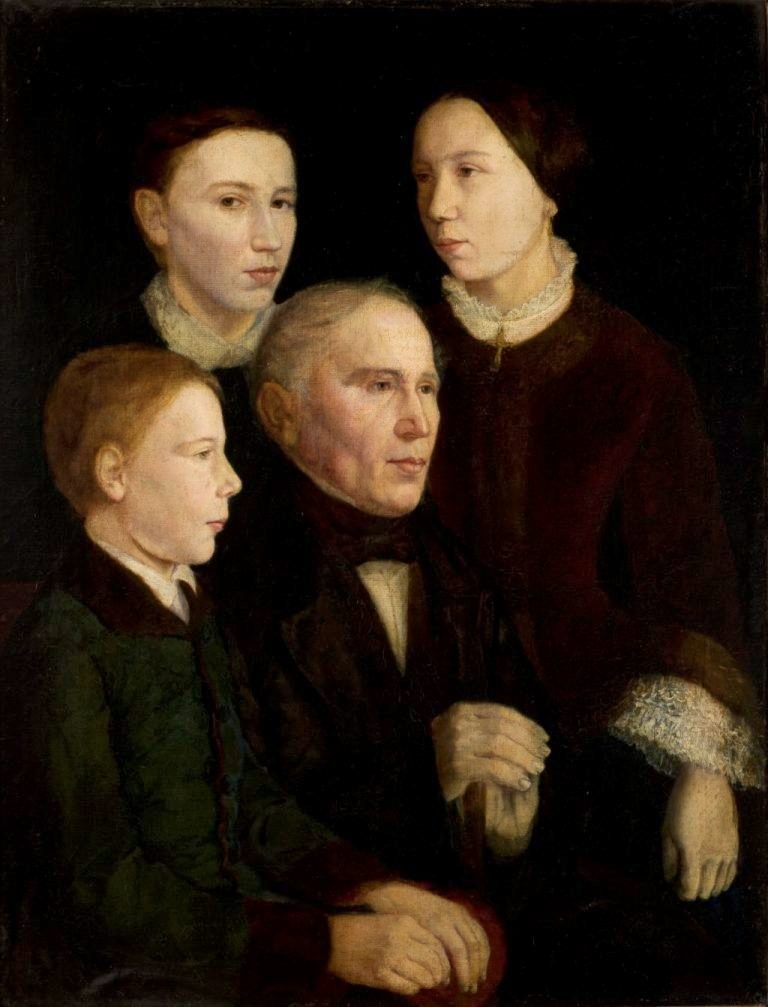|
Stanisław Wyspiański
Stanisław Mateusz Ignacy Wyspiański (; 15 January 1869 – 28 November 1907) was a Polish playwright, painter and poet, as well as interior and furniture designer. A patriotic writer, he created a series of symbolic, national dramas within the artistic philosophy of the Young Poland Movement. Wyspiański was one of the most outstanding and multifaceted artists of his time in Poland under the foreign partitions. He successfully joined the trends of modernism with themes of the Polish folk tradition and Romantic history. Unofficially, he came to be known as the Fourth Polish Bard (in addition to the earlier Three Bards: Adam Mickiewicz, Juliusz Słowacki, and Zygmunt Krasiński). Biography Stanisław Wyspiański was born to Franciszek Wyspiański and Maria Rogowska. His father, a sculptor, owned an atelier at the foot of Wawel Hill. His mother died of tuberculosis in 1876 when Stanisław was seven years old. Due to problems with alcohol, Stanisław's father could not fulfil ... [...More Info...] [...Related Items...] OR: [Wikipedia] [Google] [Baidu] |
Kraków
Kraków (), or Cracow, is the second-largest and one of the oldest cities in Poland. Situated on the Vistula River in Lesser Poland Voivodeship, the city dates back to the seventh century. Kraków was the official capital of Poland until 1596 and has traditionally been one of the leading centres of Polish academic, economic, cultural and artistic life. Cited as one of Europe's most beautiful cities, its Old Town with Wawel Royal Castle was declared a UNESCO World Heritage Site in 1978, one of the first 12 sites granted the status. The city has grown from a Stone Age settlement to Poland's second-most-important city. It began as a hamlet on Wawel Hill and was reported by Ibrahim Ibn Yakoub, a merchant from Cordoba, as a busy trading centre of Central Europe in 985. With the establishment of new universities and cultural venues at the emergence of the Second Polish Republic in 1918 and throughout the 20th century, Kraków reaffirmed its role as a major national academic and a ... [...More Info...] [...Related Items...] OR: [Wikipedia] [Google] [Baidu] |
Three Bards
The Three Bards (, ) are the national poets of Polish Romanticism, Polish Romantic literature. They lived and worked in exile during the partitions of Poland which ended the existence of the Polish sovereign state. Their Tragedy, tragic Poetry, poetical Play (theatre), plays and epic poetry written in the aftermath of the November Uprising, 1830 Uprising against the Russia, Russian rulership, revolved around the Polish struggle for independence from foreign powers. Meaning ''Wieszcz'' means ''prophet'' or ''Fortune-telling, soothsayer'' in the Polish language. Therefore, the Three Bards were thought to not only voice Polish national sentiments but also to foresee the nation's future. The term Three Bards is almost exclusively used to denote Adam Mickiewicz (1798–1855), Juliusz Słowacki (1809–1849) and Zygmunt Krasiński (1812–1859). Of the three, Krasiński is considered the least influential. In a rough classification of the members of this triad, Mickiewicz, the maste ... [...More Info...] [...Related Items...] OR: [Wikipedia] [Google] [Baidu] |
Henryk Opieński
Henryk Opieński (13 January 187021 January 1942) was a Polish composer, violinist, teacher, administrator and musicologist. His writings on, and collected letters by, Frédéric Chopin, were considered of paramount importance in Chopin studies of the time. Biography Opieński was born in Kraków in 1870, and he commenced his study of the violin with Vincent Singer there. When aged 12 in 1882, he participated in a juvenile prank with three other boys Stanisław Wyspiański, Józef Mehoffer, Stanisław Estreicher by tolling the Sigismund Bell. Between 1888-92 he studied chemistry at university in Prague to please his parents,Grove's Dictionary of Music and Musicians, 5th ed, 1954, Vol. VI, p. 246, Opieński, Henryk while continuing his violin studies with Ferdinand Lachner. From 1892-94 he returned to Kraków and worked in the chemical industry, being appointed controller of distilleries at Żółkiew and Rzeszów. He then resumed his study of composition with Władysław � ... [...More Info...] [...Related Items...] OR: [Wikipedia] [Google] [Baidu] |
Stanisław Estreicher
Stanisław Estreicher (26 November 1869 – 28 December 1939) was a Polish historian A historian is a person who studies and writes about the past and is regarded as an authority on it. Historians are concerned with the continuous, methodical narrative and research of past events as relating to the human race; as well as the stu ... of Law and bibliography, bibliographer; professor of the Jagiellonian University in 1906. Following the 1939 invasion of Poland, he was briefly offered to form a puppet quasi-government by Nazi Germany. He paid with his life for his refusal to do it. Life Stanisław Estreicher grew up in the intellectual atmosphere of an influential professorial dynasty at the Jagiellonian University. His father, Karol Estreicher (senior), Karol Józef Teofil Estreicher, was a leading historian of literature and the University's head librarian. His brother Tadeusz Estreicher, Tadeusz was a chemist and pioneer in cryogenics. His sister Maria was one of the ... [...More Info...] [...Related Items...] OR: [Wikipedia] [Google] [Baidu] |
Lucjan Rydel
Lucjan Rydel, also known as Lucjan Antoni Feliks Rydel (17 May 1870 in Kraków – 8 April 1918 in Bronowice Małe), was a Polish playwright and poet from the Young Poland movement. Life Rydel was the son of Lucjan Rydel, a surgeon, ophthalmologist, professor and Rector of Jagiellonian University in Kraków, and of Helena Kremer. In 1904, Rydel wrote a nativity play, ''Polish Bethlehem'' (''Betlejem polskie''), and staged its production in two suburbs of Kraków, Tonie and Bronowice, with local villagers as actors. It was an expression of his profound respect for rural Poland as well as the result of his flair for theatrical experimentation. Rydel left the third and the final act of his play open. In the course of history, new characters, including contemporary Polish politicians and celebrities, were added to it by various producers to make the play appeal to new audiences. An open end play like ''Betlejem polskie'' is a tradition originating with Kraków's only '' Szopka'' ( ... [...More Info...] [...Related Items...] OR: [Wikipedia] [Google] [Baidu] |
Polish Literature
Polish literature is the literary tradition of Poland. Most Polish literature has been written in the Polish language, though other languages used in Poland over the centuries have also contributed to Polish literary traditions, including Latin, Yiddish, Lithuanian, Russian, German and Esperanto. According to Czesław Miłosz, for centuries Polish literature focused more on drama and poetic self-expression than on fiction (dominant in the English speaking world). The reasons were manifold but mostly rested on the historical circumstances of the nation. Polish writers typically have had a more profound range of choices to motivate them to write, including past cataclysms of extraordinary violence that swept Poland (as the crossroads of Europe), but also, Poland's collective incongruities demanding an adequate reaction from the writing communities of any given period.Czesław Miłosz ''The History of Polish Literature.''Google Books preview. ''University of California Press'', Berke ... [...More Info...] [...Related Items...] OR: [Wikipedia] [Google] [Baidu] |
Polish History
The history of Poland spans over a thousand years, from medieval tribes, Christianization and monarchy; through Poland's Golden Age, expansionism and becoming one of the largest European powers; to its collapse and partitions, two world wars, communism, and the restoration of democracy. The roots of Polish history can be traced to ancient times, when the territory of present-day Poland was settled by various tribes including Celts, Scythians, Germanic clans, Sarmatians, Slavs and Balts. However, it was the West Slavic Lechites, the closest ancestors of ethnic Poles, who established permanent settlements in the Polish lands during the Early Middle Ages.. The Lechitic Western Polans, a tribe whose name means "people living in open fields", dominated the region and gave Poland - which lies in the North-Central European Plain - its name. The first ruling dynasty, the Piasts, emerged in the 10th century AD. Duke Mieszko I is considered the ''de facto'' creator of the Polish sta ... [...More Info...] [...Related Items...] OR: [Wikipedia] [Google] [Baidu] |
Gymnasium (school)
''Gymnasium'' (and variations of the word) is a term in various European languages for a secondary school that prepares students for higher education at a university. It is comparable to the US English term '' preparatory high school''. Before the 20th century, the gymnasium system was a widespread feature of educational systems throughout many European countries. The word (), from Greek () 'naked' or 'nude', was first used in Ancient Greece, in the sense of a place for both physical and intellectual education of young men. The latter meaning of a place of intellectual education persisted in many European languages (including Albanian, Bulgarian, Estonian, Greek, German, Hungarian, the Scandinavian languages, Dutch, Polish, Czech, Serbo-Croatian, Macedonian, Slovak, Slovenian and Russian), whereas in other languages, like English (''gymnasium'', ''gym'') and Spanish (''gimnasio''), the former meaning of a place for physical education was retained. School structure Be ... [...More Info...] [...Related Items...] OR: [Wikipedia] [Google] [Baidu] |
Jan Matejko
Jan Alojzy Matejko (; also known as Jan Mateyko; 24 June 1838 – 1 November 1893) was a Poles, Polish painting, painter, a leading 19th-century exponent of history painting, known for depicting nodal events from Polish history. His works include large scale oil on canvas, oil paintings such as ''Rejtan (painting), Rejtan'' (1866), ''the Unia lubelska (painting), Union of Lublin'' (1869), '' the Astronomer Copernicus, or Conversations with God'' (1873), or ''the Battle of Grunwald (painting), Battle of Grunwald'' (1878). He was the author of numerous portraits, a gallery of List of Polish monarchs, Polish monarchs in book form, and murals in St. Mary's Basilica, Kraków. He is considered by many as the most celebrated Polish painters, Polish painter, and sometimes as the "national painter" of Poland. Matejko was among the notable people to receive an unsolicited letter from the German philosopher Friedrich Nietzsche, as the latter tipped, in January 1889, into his psychotic break ... [...More Info...] [...Related Items...] OR: [Wikipedia] [Google] [Baidu] |
Tuberculosis
Tuberculosis (TB) is an infectious disease usually caused by '' Mycobacterium tuberculosis'' (MTB) bacteria. Tuberculosis generally affects the lungs, but it can also affect other parts of the body. Most infections show no symptoms, in which case it is known as latent tuberculosis. Around 10% of latent infections progress to active disease which, if left untreated, kill about half of those affected. Typical symptoms of active TB are chronic cough with blood-containing mucus, fever, night sweats, and weight loss. It was historically referred to as consumption due to the weight loss associated with the disease. Infection of other organs can cause a wide range of symptoms. Tuberculosis is spread from one person to the next through the air when people who have active TB in their lungs cough, spit, speak, or sneeze. People with Latent TB do not spread the disease. Active infection occurs more often in people with HIV/AIDS and in those who smoke. Diagnosis of active TB is ... [...More Info...] [...Related Items...] OR: [Wikipedia] [Google] [Baidu] |
Wawel Hill
The Wawel Royal Castle (; ''Zamek Królewski na Wawelu'') and the Wawel Hill on which it sits constitute the most historically and culturally significant site in Poland. A fortified residency on the Vistula River in Kraków, it was established on the orders of Casimir III of Poland, King Casimir III the Great and enlarged over the centuries into a number of structures around an Renaissance in Poland, Italian-styled courtyard. It represents nearly all European architectural styles of the Medieval, Renaissance and Baroque periods. The castle is part of a fortified built environment, architectural complex erected atop a limestone outcrop on the left bank of the Vistula River, at an altitude of 228 metres above sea level.Dr. Jan Urban, "Geological foundation of Kraków"retrieved from the Internet Archive, May 21, 2008 The complex consists of numerous buildings of great historical and national importance, including the Wawel Cathedral where Polish monarchs were crowned and buried. Som ... [...More Info...] [...Related Items...] OR: [Wikipedia] [Google] [Baidu] |
Atelier
An atelier () is the private workshop or studio of a professional artist in the fine or decorative arts or an architect, where a principal master and a number of assistants, students, and apprentices can work together producing fine art or visual art released under the master's name or supervision. Ateliers were the standard vocational practice for European artists from the Middle Ages to the 19th century, and common elsewhere in the world. In medieval Europe this way of working and teaching was often enforced by local guild regulations, such as those of the painters' Guild of Saint Luke, and of other craft guilds. Apprentices usually began working on simple tasks when young, and after some years with increasing knowledge and expertise became journeymen, before possibly becoming masters themselves. This master-apprentice system was gradually replaced as the once powerful guilds declined, and the academy became a favored method of training. However, many professional artists c ... [...More Info...] [...Related Items...] OR: [Wikipedia] [Google] [Baidu] |

.jpg)
.jpg)
.jpg)






